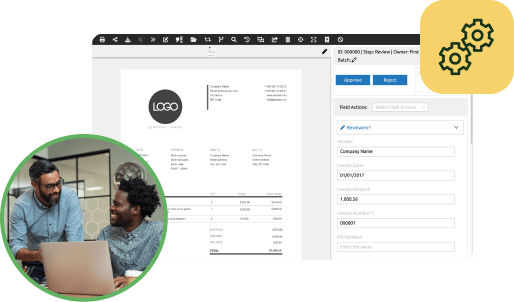
Wadih Pazos
Wadih founded both PairSoft and PaperSave. He is an avid technologist who specializes in streamlining operations and maximizing productivity.
View all posts by Wadih PazosWadih Pazos

According to the global management consulting firm, “Uncertainty therefore appears set to persist in the business environment as markets and businesses regain their footing in the post–pandemic world. In this era of upheavals, procurement leaders have an opportunity to reinvent their function and broaden their mandates to promote greater resilience.”
By gaining control of each procurement stage, businesses can effectively reduce costs, ensure timely payments, and enhance the quality of vendor relationships. In order for businesses to successfully scale and achieve long-term growth, they must evaluate if their procure-to-pay business (P2P) is holding them back.
In the absence of automated, frictionless P2P processes, Accounts Payable teams are challenged to properly educate personnel about the process, document the steps, streamline approvals, and maintain transparency.
According to a Paystream 2018 Procurement Insights report, 80% of organizations still use manual or semi-digital tools to manage their P2P cycle. Manual procure-to-pay processes typically require all participants to understand the end-to-end process, but companies rarely invest in the time and resources required to suitably educate them.
There also tends to be a heavy reliance on manual contract review or the participant’s knowledge of contracted vendor terms, tolerance levels for variances, and contracted unit prices vs. invoiced unit prices. These gaps in knowledge serve as grave barriers to a business’ capacity to scale. From the purchase requisition to the purchase order and everything that follows, the P2P process is complicated — and relying on outdated, fragmented procurement software can stall scaling potential.
As procurement professionals, we know that educating new employees on the complexities of the process can be daunting and time-consuming. What’s more, teaching by example with an “on-the-job” approach takes time that is better spent elsewhere, given that employees need to go through at least one cycle of an invoice per vendor to adequately understand the steps. Additionally, episodes of high turnover yield knowledge losses when employees leave the company before training others in their place.
To succeed in this increasingly competitive global economy, companies must act quickly to enter new markets, penetrate more deeply into existing markets, and build competitive market advantages. Embracing digital solutions will help businesses hedge the aforementioned procurement challenges, adapt to current process needs, and enable steady growth in the global marketplace.
Did you Know?Gartner estimates that the overall market for P2P software (including both on-premises and cloud/SaaS solutions) reached $3 billion in 2018. |
Because manual P2P processes are expensive, inefficient, and inflexible, organizations looking to increase productivity and profitability should shift to a forward-thinking mindset — and it starts with automation. As the procure-to-pay suite market expeditiously expands, your competition may be successfully controlling spending, improving vendor collaboration, and improving operational efficiency across their organizations with automated P2P solutions.
Cloud-based procurement digitizes the antiquated, manual processes of yesterday and is sparking a chain reaction of productivity, thus empowering next-level profitability for global businesses. Transitioning to an automated process that bridges the gap between data, people, and technology saves time, money, and resources for the long term.
|
Best-in-breed, automated solutions enable a business’ procure-to-pay process to be conveniently configured within the P2P tool. All participants in the process need only learn how to use the automated software to the degree it enables them to successfully execute on their tasks.
That said, there is no risk triggered by valued employees leaving and losing single points of failure. They do not need to understand the logic behind the overarching P2P process, decision-making matrices, approval levels, tolerances on variances, and more. Automation leads to lower demand for manual activities, increased revenue, and improved vendor and customer relationships.
It’s not enough to keep a pulse on the technological advancements that continue to power global businesses. Organizations that want to drive long-term profitable growth must meet the demand for faster processes, streamlined workflows, improved communication, and fully-integrated P2P solutions.
|
By opting out of manual and environmentally-toxic, paper-based processes, businesses are claiming their stake in the competitive digital transformation that is taking place across the globe. With the adoption of cloud-based business solutions, you can optimize your overarching business strategy to ensure cost savings and sustainable growth.
At PairSoft, we help businesses supercharge their procurement process with user-friendly, digital procurement software. Streamline your manual tasks across the end-to-end P2P automation process to help solve your business’ scaling challenges today — and into the future. Get a demo today.
Get a free demo to learn how our tailored workflows have boosted the AP performance for organizations of all sizes.


Many organizations start with manual receipt handling, fragmented card feeds and slow AP processes. Implement AI agents to auto-capture receipts, route approvals, enable punch-out buys and post to the ERP.
Result: faster batching, fewer errors and cost savings. “This saves us hours every month.”
Many organizations face slow, paper-heavy AP and fragmented procurement that waste time and inflate costs. AI Agents can automate approvals, PO matching and record sync to improve speed, accuracy and control. Client quote: “It freed up hours and made our process reliable.”
Operational drag and rising costs slow growth: teams waste time on manual tasks, misaligned priorities and opaque processes. AI Agents help automate routine work and coordinate actions across teams. “We’ve lost time to repeats and handoffs,” says a typical client.
Companies struggle with manual procurement, fragmented approvals, and costly integrations that slow growth and obscure spend. Our AI Agents streamline requisitions, POs, and invoice matching to cut manual work and improve visibility. “We were wasting time and missing insights,” says a client.

Many teams start with fragmented PO/AP systems, manual matching and delayed financial reporting. Deploying AI agents to automate PO checks, real-time encumbrance tracking and invoice matching reduces processing time and errors, delivering live budgets and faster closes. “Finally, we can see current balances and approve instantly.”
Many companies juggle growing invoice volumes and legacy systems. They struggle with manual processes, compliance gaps and limited headcount. Our AI Agents automate integrations, enforce rules and surface exceptions. The typical outcome: faster closes and measurable ROI. “We stopped chasing invoices.”